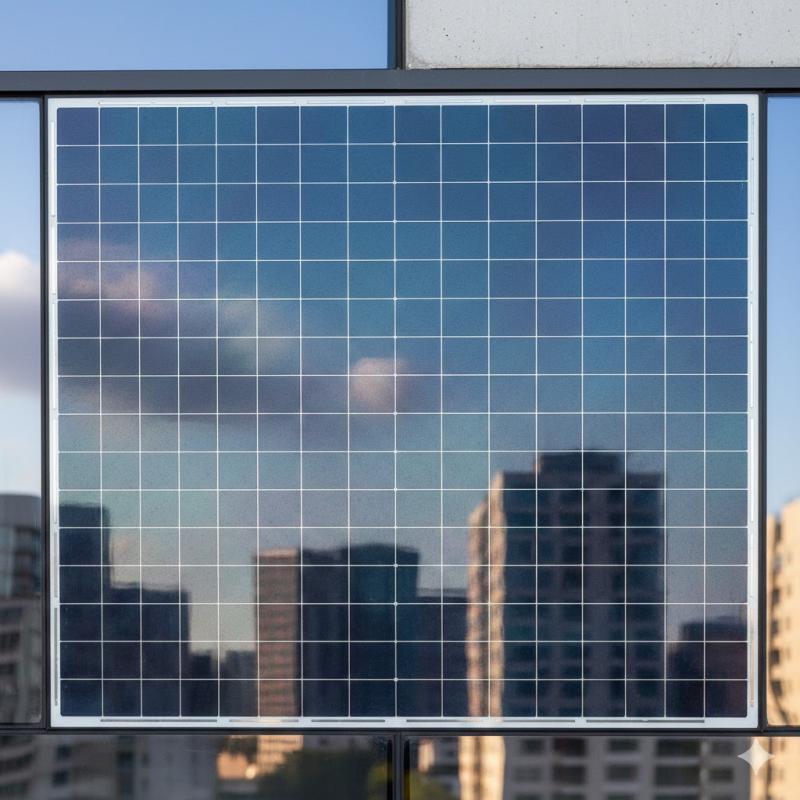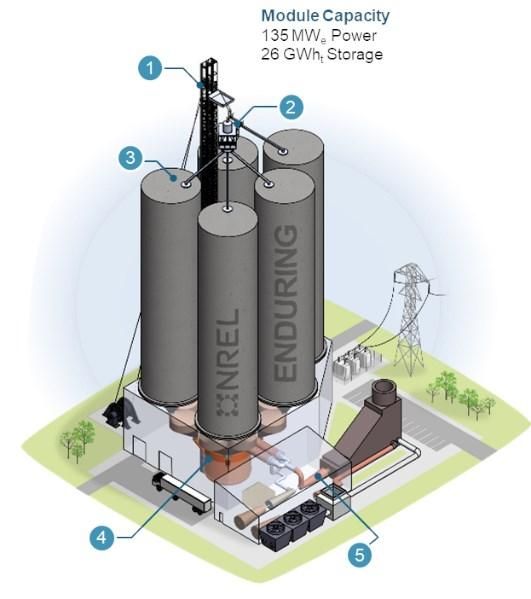China’s Overseas Industrial Parks Provide a Path to Industrial Decarbonization – World Resources Institute
Report on the Decarbonization of Overseas Industrial Parks and Contribution to Sustainable Development Goals
Introduction: Aligning Industrial Development with Sustainable Development Goals
The deployment of clean energy technologies in global industrial parks represents a significant advancement in aligning industrial growth with the United Nations Sustainable Development Goals (SDGs). Recent projects, such as the installation of a 65.9-megawatt (MW) rooftop solar photovoltaic (PV) system at a steel mill in Indonesia’s Morowali Industrial Park, exemplify a tangible commitment to SDG 7 (Affordable and Clean Energy) and SDG 13 (Climate Action). This single project is projected to reduce carbon dioxide emissions by approximately 100,000 metric tons annually. Such initiatives underscore the critical role industrial hubs can play in the global transition to clean energy, supporting SDG 9 (Industry, Innovation, and Infrastructure) by retrofitting industries for sustainability. This report analyzes the technical potential of China’s overseas industrial parks to accelerate this transition and contribute to global sustainability targets.
The Role of China’s Overseas Industrial Parks in Global Decarbonization
Investment and Global Footprint
China’s investment in overseas industrial parks is a major component of its international economic cooperation, directly influencing industrial capacity and infrastructure in host nations. This supports the objectives of SDG 17 (Partnerships for the Goals).
- Between 1992 and 2022, China invested approximately $89.7 billion in 159 overseas industrial parks.
- These parks are located in 54 countries, with nearly half situated in Asia and the remainder primarily in Africa and Europe.
- As vital nodes in global supply chains, these parks are instrumental in spurring economic growth and shaping manufacturing, contributing to SDG 9.
Technical Potential for Renewable Energy and Climate Action (SDG 7 & SDG 13)
A significant majority of these industrial parks are located in regions with abundant renewable energy resources, particularly solar irradiation, making them ideal for clean energy deployment. The technical potential for transitioning these parks to renewable energy is substantial.
- Maximum Installed Solar PV Capacity: 419.66 gigawatts (GW)
- Maximum Installed Wind Power Capacity: 116.48 gigawatts (GW)
- Potential Annual Emissions Reduction: 340 million metric tons of carbon dioxide
Achieving this potential would advance the world 2% closer to reaching net-zero emissions by 2050. An accelerated transition before 2030 could increase this contribution to nearly 5%, marking a critical step toward fulfilling the ambitions of SDG 13.
Opportunities and Challenges in the Transition to Clean Energy
Investment and Economic Opportunities (SDG 7 & SDG 9)
The integration of renewable energy presents a significant economic opportunity, capable of attracting substantial private investment and fostering sustainable industrial infrastructure.
- Total potential investment is estimated at over $280 million.
- Potential investment in rooftop solar PV projects: $77 million.
- Potential investment in ground-mounted PV projects: $158 million.
- Potential investment in wind projects: $53 million.
Policy and Market Drivers for Sustainable Production (SDG 12 & SDG 17)
The motivation for decarbonization is driven by two primary factors that align with global sustainability trends.
- Policy-Driven Levers: Host countries are increasingly establishing national energy transition strategies and climate goals. Policies such as sector-specific decarbonization requirements, tax exemptions for renewable energy equipment, and favorable electricity pricing mechanisms are critical for incentivizing the shift. This reflects the integration of climate measures into national policies as called for by SDG 13.
- Market-Driven Levers: There is a growing market demand for products manufactured using 100% green electricity. As tenants in industrial parks are often upstream suppliers, this pressure from the end market promotes SDG 12 (Responsible Consumption and Production) by decarbonizing the entire supply chain.
Operational and Technical Challenges
Transitioning to renewable energy requires overcoming several key challenges.
- Ensuring a stable and reliable electricity supply for industrial operations, particularly in remote areas lacking grid access.
- The necessity for operators to build and manage captive power plants.
- Addressing the comparative cost of renewable energy solutions against traditional fossil fuels in investment-return models.
- Facilitating collaboration between park operators, tenants, and local energy companies to design, build, and maintain renewable energy facilities.
Strategic Recommendations for Scaling Decarbonization Efforts
To fully realize the potential of industrial parks as hubs for sustainable development, a collaborative and strategic approach is required.
- Establish Multi-Stakeholder Partnerships (SDG 17): Fostering partnerships involving policymakers, investors, park operators, and financial institutions is crucial. Enhanced, science-based cooperation can unlock the technical and financial potential for renewable energy deployment.
- Align Decarbonization Standards Nationally and Internationally: Implement clear, actionable standards to guide decarbonization efforts. It is recommended that renewable energy account for at least 15% of total energy consumption within industrial parks to provide a measurable target in line with SDG 7.
- Prioritize Integrated Energy Planning: Energy planning must become a central element of industrial park investment and ESG strategies. This includes developing holistic, time-bound decarbonization roadmaps that replace fossil fuel-based plants with renewable solutions, thereby supporting the sustainable infrastructure goals of SDG 9.
- Develop High-Quality Project Preparation and Feasibility Studies: Overcome project readiness bottlenecks by ensuring renewable energy proposals meet rigorous technical, financial, and legal requirements. Comprehensive cost-benefit analyses and risk mitigation strategies are essential to attract investment and ensure long-term success.
Conclusion: A Pathway to a Sustainable and Decarbonized Future
Industrial parks possess immense potential to serve as catalysts for a low-carbon future. By transitioning to clean energy, these economic hubs can make substantial contributions to multiple Sustainable Development Goals, most notably SDG 7 (Affordable and Clean Energy), SDG 9 (Industry, Innovation, and Infrastructure), SDG 13 (Climate Action), and SDG 17 (Partnerships for the Goals). While the path to decarbonization will vary based on geography and economic context, the technical feasibility already exists. Through strategic cooperation among all stakeholders, the commitment to sustainable industrialization can be translated into concrete actions, accelerating the global transition to a net-zero economy.
Analysis of Sustainable Development Goals in the Article
-
Which SDGs are addressed or connected to the issues highlighted in the article?
The article highlights issues and solutions that are directly connected to several Sustainable Development Goals (SDGs). The primary focus on transitioning industrial parks from fossil fuels to renewable energy sources like solar and wind power addresses goals related to energy, industry, climate, and partnerships.
- SDG 7: Affordable and Clean Energy: The core theme of the article is the deployment of clean energy technologies (solar PV, wind power) in industrial parks to replace fossil fuels like coal. This directly supports the goal of ensuring access to affordable, reliable, sustainable, and modern energy for all.
- SDG 9: Industry, Innovation, and Infrastructure: The article focuses on industrial parks, which are key components of infrastructure. The discussion revolves around upgrading these industrial facilities by integrating innovative and clean technologies to make them more sustainable and environmentally sound.
- SDG 13: Climate Action: A major driver and outcome discussed is the reduction of carbon dioxide emissions. The article quantifies the impact of these clean energy projects on cutting emissions, directly contributing to urgent action to combat climate change.
- SDG 17: Partnerships for the Goals: The entire context is based on international cooperation—Chinese investment in overseas industrial parks in 54 host countries. The article explicitly calls for “multi-stakeholder partnership involving policymakers from both supply and demand countries, business investors, industrial park operators and financial institutions” to scale up these efforts.
-
What specific targets under those SDGs can be identified based on the article’s content?
The article provides specific examples and data that align with several targets under the identified SDGs.
- Target 7.2: By 2030, increase substantially the share of renewable energy in the global energy mix. The article’s central topic is the transition to renewable energy in industrial parks, such as the steel mill in Indonesia replacing a coal plant with solar PV. It also recommends that “renewable energy account for at least 15% of the total energy consumption within industrial parks.”
- Target 7.a: By 2030, enhance international cooperation to facilitate access to clean energy research and technology… and promote investment in energy infrastructure and clean energy technology. The article details Chinese investment in clean energy projects abroad, such as the “$37.5 million” investment in Indonesia, as a form of international cooperation to deploy clean energy technology.
- Target 9.4: By 2030, upgrade infrastructure and retrofit industries to make them sustainable… with greater adoption of clean and environmentally sound technologies. The act of covering a steel mill’s roof with solar panels to replace a coal power plant is a direct example of retrofitting an industry to make it sustainable with clean technology.
- Target 13.2: Integrate climate change measures into national policies, strategies and planning. The article notes that the motivation for these projects is stimulated by “dynamic policies from host countries” and their “national energy transition strategy and sets national climate goals,” showing the integration of climate measures into national planning.
- Target 17.7: Promote the development, transfer, dissemination and diffusion of environmentally sound technologies to developing countries. The article describes Chinese companies investing in and building solar PV facilities in countries like Indonesia and in Africa, which is a clear example of transferring and diffusing environmentally sound technologies.
- Target 17.3: Mobilize additional financial resources for developing countries from multiple sources. The article highlights financial flows, including a “$37.5 million” investment, a total of “$89.7 billion” invested by China in overseas parks, and the potential to attract “$280 million” in private investment for renewable energy projects.
-
Are there any indicators mentioned or implied in the article that can be used to measure progress towards the identified targets?
Yes, the article mentions several quantitative and qualitative indicators that can be used to measure progress.
- Indicator for Target 7.2 (Renewable energy share): The article implies this indicator by recommending that “renewable energy account for at least 15% of the total energy consumption within industrial parks.” This percentage is a direct measure of the renewable energy share.
- Indicator for Target 9.4 (CO2 emissions): The article provides specific data on CO2 emission reductions, which aligns with indicator 9.4.1 (CO2 emission per unit of value added). Examples include the steel mill cutting “100,000 metric tons of carbon dioxide emissions each year” and the potential for all parks to eliminate “a total of 340 million metric tons of carbon dioxide emissions each year.”
- Indicator for Target 7.a/17.3 (Financial flows): The article quantifies international financial flows for clean energy. It mentions specific investment figures like “$37.5 million” for the Indonesian project and “$89.7 billion” for China’s overall investment in overseas parks, which can be used to track progress for indicator 7.a.1.
- Indicator of Installed Capacity: The article uses the installed capacity of renewable energy as a key metric. It mentions “65.9 megawatts (MW)” of solar power in Indonesia, a “7.5 MW rooftop solar project” in Africa, and the total technical potential of “419.66 gigawatts (GW)” for solar and “116.48 GW” for wind in all overseas parks. This is a direct measure of the scale of renewable energy deployment.
Summary of SDGs, Targets, and Indicators
| SDGs | Targets | Indicators |
|---|---|---|
| SDG 7: Affordable and Clean Energy |
|
|
| SDG 9: Industry, Innovation, and Infrastructure |
|
|
| SDG 13: Climate Action |
|
|
| SDG 17: Partnerships for the Goals |
|
|
Source: wri.org
What is Your Reaction?
 Like
0
Like
0
 Dislike
0
Dislike
0
 Love
0
Love
0
 Funny
0
Funny
0
 Angry
0
Angry
0
 Sad
0
Sad
0
 Wow
0
Wow
0
















































:focal(1500,1000)/https://media.globalcitizen.org/a6/9a/a69a4720-d8a1-4715-b596-18738d03c05c/rotary_polio_hero_image.jpg?#)







/countries/sri-lanka/photo-credit---dmc-sri-lanka.tmb-1200v.jpg?sfvrsn=dc298bcc_1#)
















